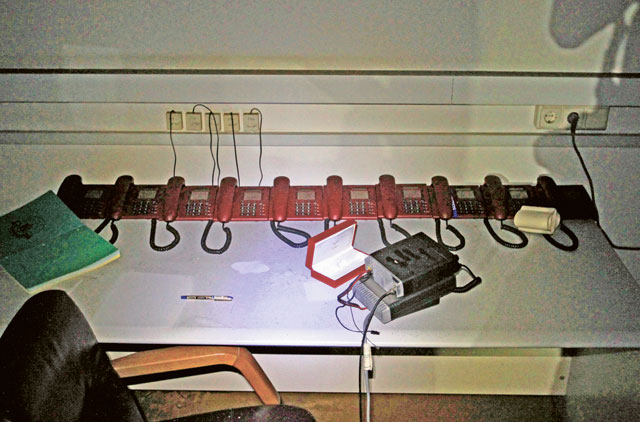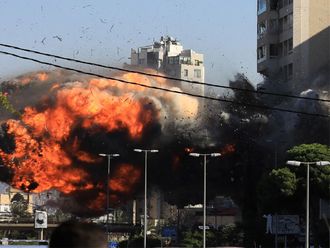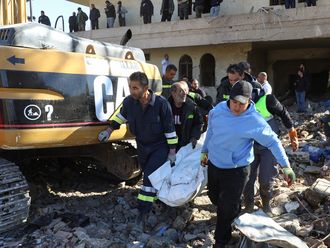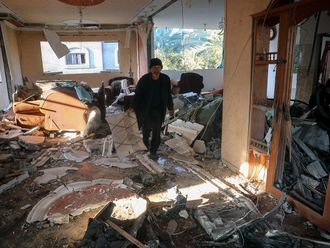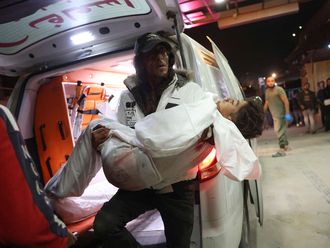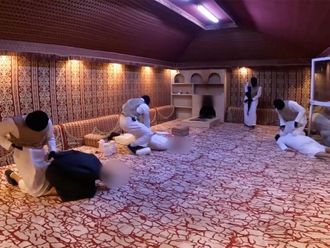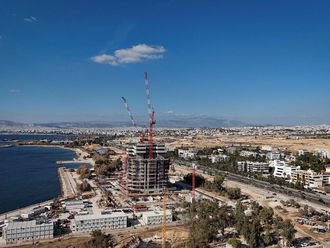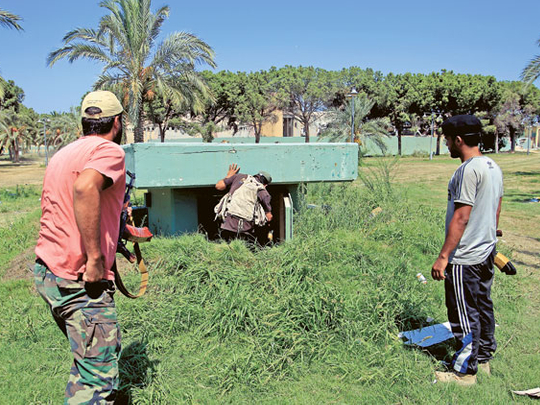
Tripoli: Beneath the grassy courtyard of Muammar Gaddafi's private compound, long tunnels connect bunkers, command centres and spiral staircases that lead to a luxurious home filled with Gaddafi family photos.
The electric lights are out and the banks of telephones have gone dead.
When revolutionaries overran the compound, they discovered what had long been rumoured: an elaborate secret underground network.
Outsiders had never seen the tunnels beneath the Bab Al Aziziya compound. Many Libyans assume that underground passages connect all of Tripoli — which they say explains Gaddafi's ability to appear for speeches in places where no one saw him arrive. Some guess he fled the city through one of the tunnels as the revolutionaries swept into Tripoli, though because of damage from Nato bombing, it was not possible to determine if the tunnels actually extend outside of Bab Al Aziziya.
After over-running the compound, the revolutionaries set alight his family home, seized huge numbers of weapons and turned the complex into a staging ground for fighting elsewhere in the capital.
They also discovered the underground network beneath it, a web of tunnels whose reach is still unclear.
"There's a Tripoli above ground and a Tripoli underground," said revolutionary fighter Esmail Dola, 26, exploring the tunnels with friends.
But few revolutionaries were surprised that Gaddafi, who ruled for four decades and survived multiple assassination attempts, would have a secret world where he could escape.
"It's normal that someone like Gaddafi would do this to protect himself," said revolutionary Riad Gneidi, walking curiously through the tunnels with an assault rifle over his shoulder. "Any dictator has to have a way to protect himself and to escape in times like these."
No street signs
The Bab Al Aziziya compound had always been a mystery to most Libyans. Though it is one of the city's largest landmarks, no streets signs indicate where it is. Few ever entered, and many Tripoli residents said they wouldn't even walk nearby, fearing security guards on the compound's high green walls would get suspicious and arrest or shoot them.
The tunnels have become an attraction for curious revolutionaries.
They are high enough for a tall man to stand upright and wide enough so two people can walk comfortably abreast. Their walls are foot-thick concrete, with heavy metal doors that divide the tunnels into sections. Gas masks in plastic cases have been distributed throughout the complex.
The tunnels lead to an array of rooms. Some are simple sleeping quarters with double beds, small refrigerators and dressers, perhaps meant for guards. Others appear to be blast bunkers, with thicker walls and small metal hatches. In one tunnel lies the ruins of a smashed golf cart.
In places, the tunnels open into multi-room complexes. One lies under Gaddafi's former residence, which the United States bombed in 1986. Doors at the top of curving, tiled stairways to the house have been bricked shut. Nearby is a broken elevator. Some of the tunnels are now black with soot and filled with debris from Nato bombings.
Getaway ramps
One area on the compound's edge, reduced to rubble by the bombs, has rooms full of TVs and at least three getaway ramps leading to the street. Before the bombing, it was covered with grass and invisible from above.
Another section has bunk beds, a full sitting room, a bathroom, kitchen and an office full of video production equipment. The rest of the area has been reduced to rubble, and the sun shines through holes punched in the roof by bombs.
One tunnel leads beneath the Gaddafi family home.
The house itself is a sprawling orange stucco building surrounded by a green metal wall. The area is grassy and full of trees, with a swimming pool in the middle and surrounded by smaller homes.
Family photos are stacked in a large, ornate sitting room: Gaddafi shaking hands with Nelson Mandela, his son and heir-apparent Saif Al Islam sitting in a tuxedo at a banquet.
One bedroom has stacks of DVDs, from James Bond to Kung Fu Killer II. Papers on a desk include an invitations addressed to Gaddafi's son Saif Al Arab, who was killed earlier in the war, and a handwritten letter in Arabic to Gaddafi from a farmer asking the ‘Brother Leader' to intervene in a land dispute.
Another bedroom is full of stuffed animals and books for improving English. ‘Love You' is written in red letters on the mirror in an attached bathroom, and the toilet seat looks like a ladybug.
A closet in the hallway holds African-print clothes like the ones Gaddafi often wore, though it was not clear if they were his.
Two spiral staircases lead to the bunker rooms below. Simple desks along the walls in one hold dozens of identical red telephones, each with the name of a Libyan city written on it. All the lines are now dead.


